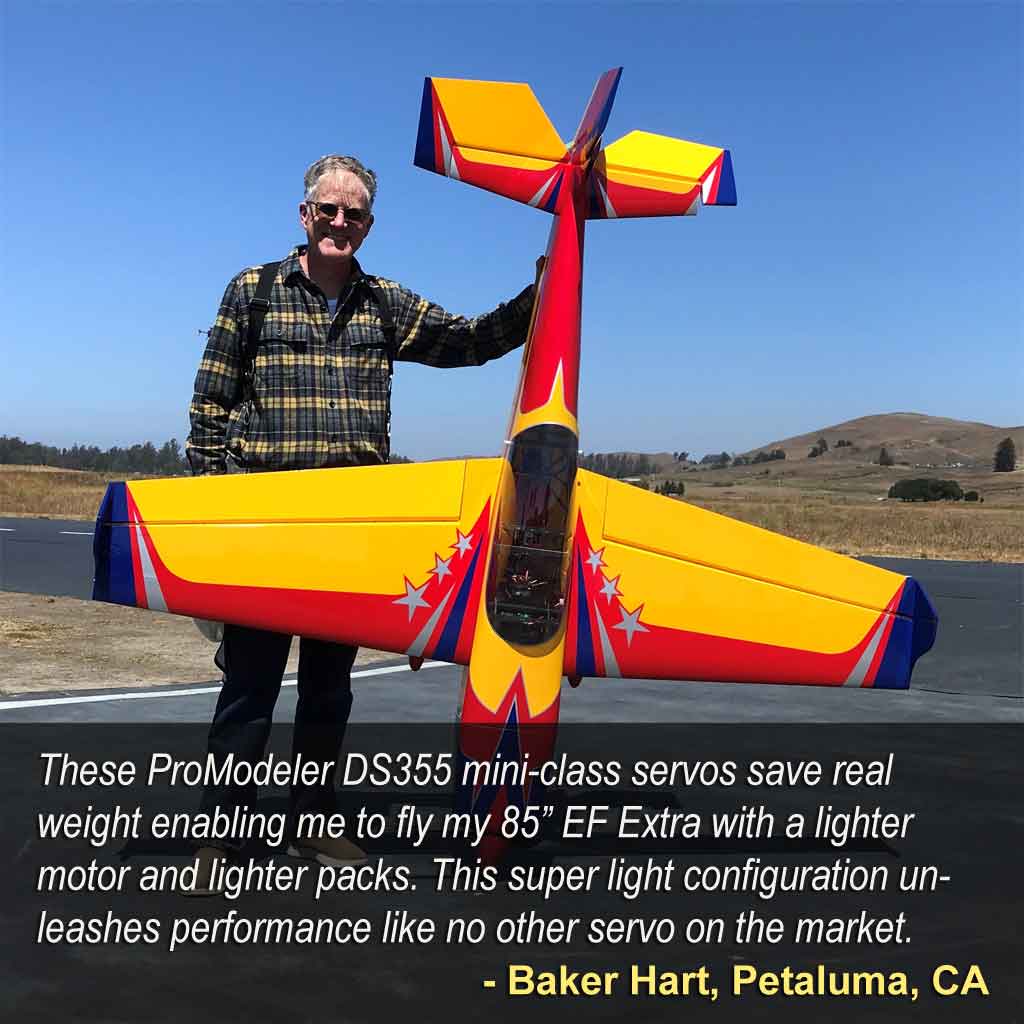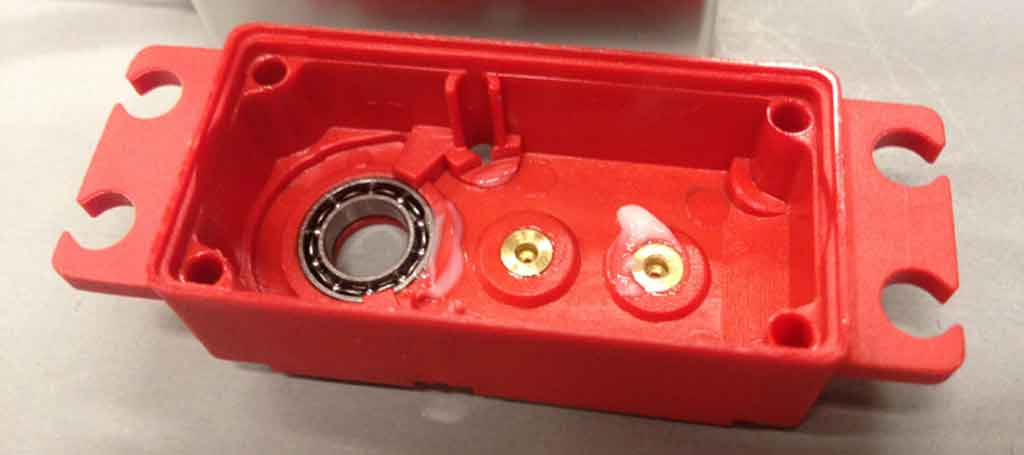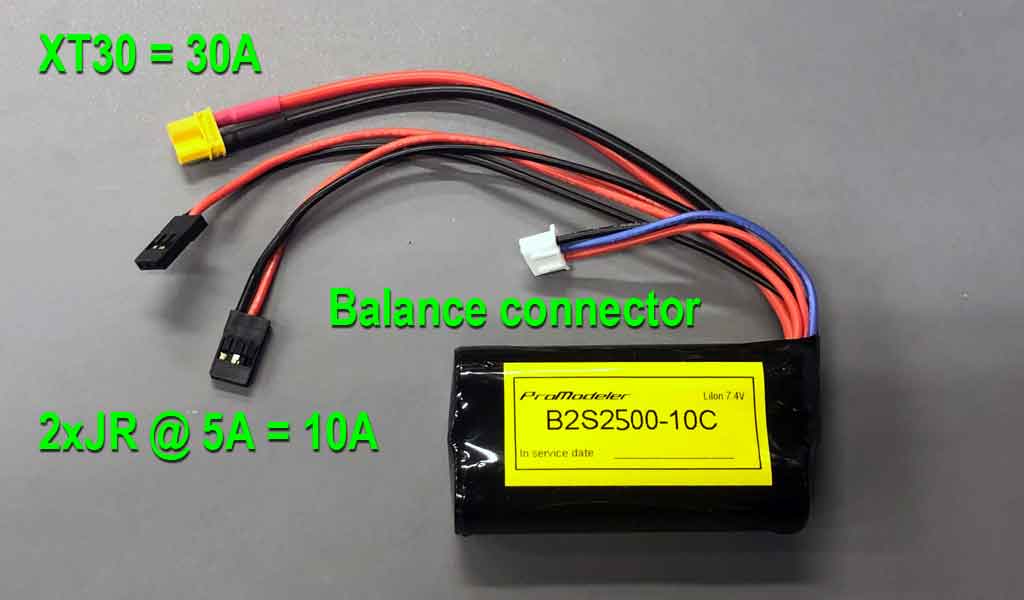I recently received a query from a fellow regarding selecting the appropriate servos for a Hangar 9 Ultra Stick - the 30cc instead of the original 10cc version (the small one has a 60" wingspan while the 30cc version sports a two-piece wing spanning 81" that's nearly the size of a closet door). His question offered a lot of subtlety, so I post it in its entirety.
Q. What would be the appropriate servos to use in a Hangar 9 Ultra Stick 30cc. Which will most likely be fitted with a DA-35 engine. Mostly flown for sport flying some 3d maneuvers. Just by comparing torque and size I think I may be able to use your DS90DLHV. Any recommendations you have for the build would be greatly appreciated.
Thank you,
John Croix
A. There was a time I'd have said, yes, use the DS90DLHV in the 30cc Ultra Stick and moved on to other things. Especially because they themselves (Hangar 9) recommend their Spektrum A6180 standard size servo, which on 6V is rated at 94oz-in - but - over time we have revised our opinion. These days we now recommend the DS90DLHV for the 10cc version, instead (and the DS180DLHV for those who intend to fly this smaller version really hard). But my response to him is all about the larger version, the hugely popular 30cc model.
So, specifically to John's question; would the DS90DLHV work? Sure it would. Especially if your flying style leans more toward the sport end of the scale (read this as loops, rolls, inverted flight, occasional spin, plus endless touch-and-goes).
Some caveats before I continue
If the above paragraph strikes you as an example of me covering my ass, you're right. This is because over time we have built up a fair base of actual user opinion/experience. Naturally, this feedback from folks using our servos when outfitting their 30cc-size Ultra Stick is in the back of my mind.
On top of this, and I admit I'm reading between the lines, but I'm taking note of two things; he's planning on using a really powerful DA-35 (as powerful as some 50cc engines) and he mentions 3D maneuvers. More later - but - remember, I don't actually fly with this guy. My point being; since I don't fly with this fellow and I really don't know much of anything about him beyond what he said - and - what 'he' means by 3D and what 'I' mean are probably two different things, I am guessing a fair bit. Guessing based on experience but nevertheless, guessing.
Bottom line? This kind of question always poses a tricky situation because I have incomplete information so please allow me some dancing room. Nevertheless, what follows is what we've learned so maybe you can use the information to your benefit, even if you don't buy our servos. Basically, making a better decision servo-wise is a win-win for all of us because you'll fly a safer model and we come off looking good as we're reflected in you! Anyway, if you're thinking of building one of these outstanding models for your fleet, read on!
So to recap before proceeding:
- I have learned folks are generally flying this 30cc version rather aggressively - and some are flying it really, really hard.
- this guy mentioned a DA-35, said engine generally being considered the wild mustang in the paddock amongst horses, e.g. the standard bearer for high performance engines in this class.
- he also mentioned the phrase, '3D maneuvers'.
The use case for various torque values:
About half of our customers opted to use the DS180DLHV. This servo is rated at nearly twice the torque as the recommended A6180 servo. It's my opinion they opt for the DS180 because they planned to fly the model pretty hard, and in general, the harder you're going to fly a model (any model) the more powerful a servo you should use.
Thing is, flying styles are really subjective and what 'I' think is a hard maneuver, another guy watches someone perform, smirks, and thinks, 'pansy' (and some actually say it out loud).
The other thing has to do with the large size of the Ultra Stick control surfaces. And this is important because as a rule, the larger the surface and more it's deflected into the air stream and the higher the air speed, the more force is required.
Anyway, about 1/2 the folks from whom I subsequently heard back (those using the DS180), mentioned being perfectly happy. However, the other 1/2 mentioned how due to their aggressive style of flight, they would have been happier with a more powerful servo.
Note; with due regard to their opinion, I actually suspect servo speed would be a very important attribute because the torque of the 180oz-in should, in theory, be ample. That said, remember these wise words regarding theory . . .

Honestly, opinions regarding the the DS180 being less than suitable surprised us - but - it's what we've learned. Facts 'can' be inconvenient and hiding from them doesn't help anybody. So because I asked, and they kindly shared their opinions, then I am sharing with you what I've learned!
In short, half the pilots who got DS180 wish they had gotten something more powerful. And note; we don't interpret this information as a knock against the DS180. Instead, we view it more as a reflection of how guys are actually flying the big 30cc Ultra Stick, e.g. they're flogging it pretty hard!
And this brings us to the other half of our Ultra Stick 30cc customers, those whom almost to a man opted for the
DS360DLHV - although one customer, noting he had more money than God, outfitted his with one of our DS505BLHV a gorgeous but somewhat expensive all-alloy brushless servos!
Added to which, there are a small handful of folks who selected our DS415BLHV (similar torque to the DS360 but with a tremendously faster transit speed). Speed is what you really want for maneuvers like torque-rolls and Harrier-rolls when inputs and corrections need to be executed at the speed of thought. In general, during 3D flight speed is far more important than torque (the exceptions being rifle-rolls and the wall maneuvers where you better pony up for both else they look bad.
Anyway, these were folks (ones who opined the DS360 is a better alternative than the DS180) are ones who had in mind pretty aggressive flying if not real-3D from the get go. They pretty much all said at one point in the conversation, the DS360 servo is what they'd recommend to a friend.
Note, I only heard back from one DS415BLHV owner, and while obviously pleased, we went off on a tangent regarding an Extreme Flight 85" Extra before we could discuss his Stick in greater detail.
For the curious, he was trying to decide between the DS415BLHV and the pricier but more compact DS355CLHV super mini (all equipped with all-steel gear trains). Anyway, while he opted for the DS415BLHV, another fellow with whom I had a similar conversation about DS415 vs DS355 mini decided the lightweight mini was worth a try.
He's been so happy he shared this. Note, however, you pay a pretty good price for this servo compared to the DS360 (costs a tad more than the DS415, too)

- At just 44g the DS355CLHV super mini makes a difference because grams add up.
Furthermore, it's my suspicion the folks praising the DS360 were perhaps enjoying not just the 2X torque advantage over the DS180 (and about 4X that of the recommended A6180) but probably more so, the bit of added speed this servo offers. This reminds me, if you're unfamiliar with our parts number scheme;
- DS = Digital Servo
- xxx = torque rating in oz-in
- DL = motor type
- HV = 8V capable
And note; if you don't know diddly about RC servo motors in regard to their construction and what it means to you (type, e.g. iron core, coreless, and brushless), then click this ink to review this article to learn more. It's where we cut them open with a lathe and show you what's inside 'and' what's in it for you when selecting servos based on each type (because some are better than others for various reasons). That, and we delve int good solid info, which is universal (meaning all manufacturers use variations of these same motors. Worth your time, trust me.
So this brings me back to the DS415BLHV, it's my opinion modelers selecting this servo has more to do with its incredible speed because speed is THE very first consideration for hard flying pilots, and the first ting they comment about regarding similar torque servos (at 0.052sec/60° the DS415 is ~3X faster than the DS360 at 0.142sec/60°). But it's conceivable I'm all wet about this and it's all down to higher torque and less price sensitivity. As usual, when it comes to which servo is best? It depends!
Also, it's worth noting we offer the DS270DLHV, which is faster than the DS360 by a little bit but also less powerful and more closely corresponds to the Spektrum S652 is available for a great price and makes a good compromise between speed, torque, and cost.
Note; while their S652 is a pretty good servo, I feel we hold up well in the comparison. Enough so I'm not afraid of either mentioning it, or of including a link so you may conveniently eyeball our competition.
Further to this, one or two customers initially outfitted their models with that servo and reported being quite pleased (although both said if they had to do it again it would be with the DS360 because in another model, our servo was holding up better).
This is because, again in our opinion, due to greater durability. This is 100% down to the insert molded bronze hard points (where the gear shafts fit the case).

- Expensive to implement, insert molds with Swiss turned bronze = durability
Power to the people
There's more to outfitting a model with high power servos than a checkbook and a screwdriver. Even a cursory look at the specs reveals we're no longer in a world where servos consume 1-2A under load. Basically, once you get into the world of more powerful servos, you need to think beyond the traditional battery pack with a single lead.
Reason for this is because the one Dupont connector (whether equipped with a tailored Futaba, JR, or Hitec molded plastic plug) is rated at 5A . . . and 5A just doesn't cut it. So you 'must' make more available else the servo won't reach rated torque. That, and once a connector begins flowing more than 5A it begins to overheat, which is bad juju.
How much more is needed? Depends - but - in general, 10A is enough. We recommend a B2S2500 battery pack for this model because it's inexpensive and has enough capacity to generally last for an entire day's worth of flying without needing a recharge. The usual caveat being, check pack voltage before every flight!

- Use the XT30 to charge/discharge means less costly 2-lead switches vs 3-lead
So how do you get 10A to the receiver? One way is with two batteries but honestly, it's our opinion this is dumb because it also means twice the opportunity of battery failure (simple high school statistics). Smarter, instead (and 50% lighter) is by using one pack with two leads. After all, two-cells plus a lead (three components) along with chemically derived power is very reliable.
Don't believe me? Then riddle me this; why are emergency vehicles that MUST start on demand have one battery instead of two? Basically, it's because batteries are really reliable regardless of old wives tales and anecdotes.
Remember, I offer the view of an engineer where KISS rules (KISS is Keep It Simple Silly). Put in coarser language, there's less shit to go wrong!
Regarding the actual how to do it; it's simplicity itself because . . .
- one connector plugs into the switch and goes to the receiver where it's marked BAT.
- The other connector also plugs into a switch, but this one plugs into any open channel (this works because receivers us a BUS structure for power delivery).
- Plus there's an added benefit of spending another 10 bucks for a second switch, which is if you experience switch failure (waaaay more common than battery failure), then you have built in some redundancy and thus, don't crash.
Remember, those advocating for two batteries either don't understand statistics, or have a vested interest in selling two batteries (and a disregard for the significance of toting 2X the battery weight aloft). Just saying.
Note: An addendum to the manual has been issued dealing with control throws - latest info;
Aileron (high rate): Aileron (low rate):
Up: 2-11/16 inches (68mm) Up: 13/16 inches (30mm)
Down: 25/32 inches (55mm) Down: 1 inch (25mm)
Elevator (high rate): Elevator (low rate):
Up: 25/32 inches (55mm) Up: 11/16 inches (27mm)
Down: 25/32 inches (55mm) Down: 11/16 inches (27mm)
Rudder (high rate): Rudder (low rate):
Right: 2-3/4 inches (70mm) Right: 1-3/8 inches (35mm)
Left: 2-3/4 inches (70mm) Left: 1-3/8 inches (35mm)
Flaps:
Mid 1 inches (25mm) Landing 2-5/32 inches (55mm)
Summary
- The harder you're going to fly, the more torque you should plan on throwing at the problem because higher air speed, plus larger control surfaces, simply requires more power to divert airflow. Physics.
- We've learned half the folks using our DS180 wish they'd gotten something more powerful.
- We've also learned pilots who got the DS360, instead, were - to a man - happy.
- You must make enough current available to the avionics system, and 10A is enough.
So in closing (and yes, I know this isn't the hard and fast answer some may have been hoping I'd have), but the answer to which servo is most appropriate for the 30cc Ultra stick when equipped with the more powerful 35-50cc engine is . . . it depends. And bear in mind, a lot of guys use an a more powerful engine than called for, often a 50cc (and the DA-35 may well be as powerful as some 50cc engines). Thus, just like you can't have too much horsepower, sometimes overkill is called for in the servo department, also!
--
John Beech - GM (and janitor)
PS, please note an important consideration is the voltage delivered to the servo after the extensions, which we offer. This is because extensions come in various gauges and hugely affects actual torque at the control surface. Basically, all servos (all brands, 'not' just ours) deliver less torque on less voltage and extensions can knock 1/2 volt off . . . easily.
Thus, when calculating the actual torque you must account for the starting voltage, e.g. the battery chemistry, because a 2S LiPo delivers 7.4V nominal, a 2S LiIon gives you a bit less at 7.2V nominal, while a 2S LiFe is 6.6V, and thus, all things being equal, lower voltage results in lower torque. However, extensions make it worse. Anyway, this askJOHN articles - Thoughts on Servo Connectors and Extensions - delves into both of these topics for those curious to know more. As usual, for your convenience, clicking a link opens a new browser tab so you don't lose your place.